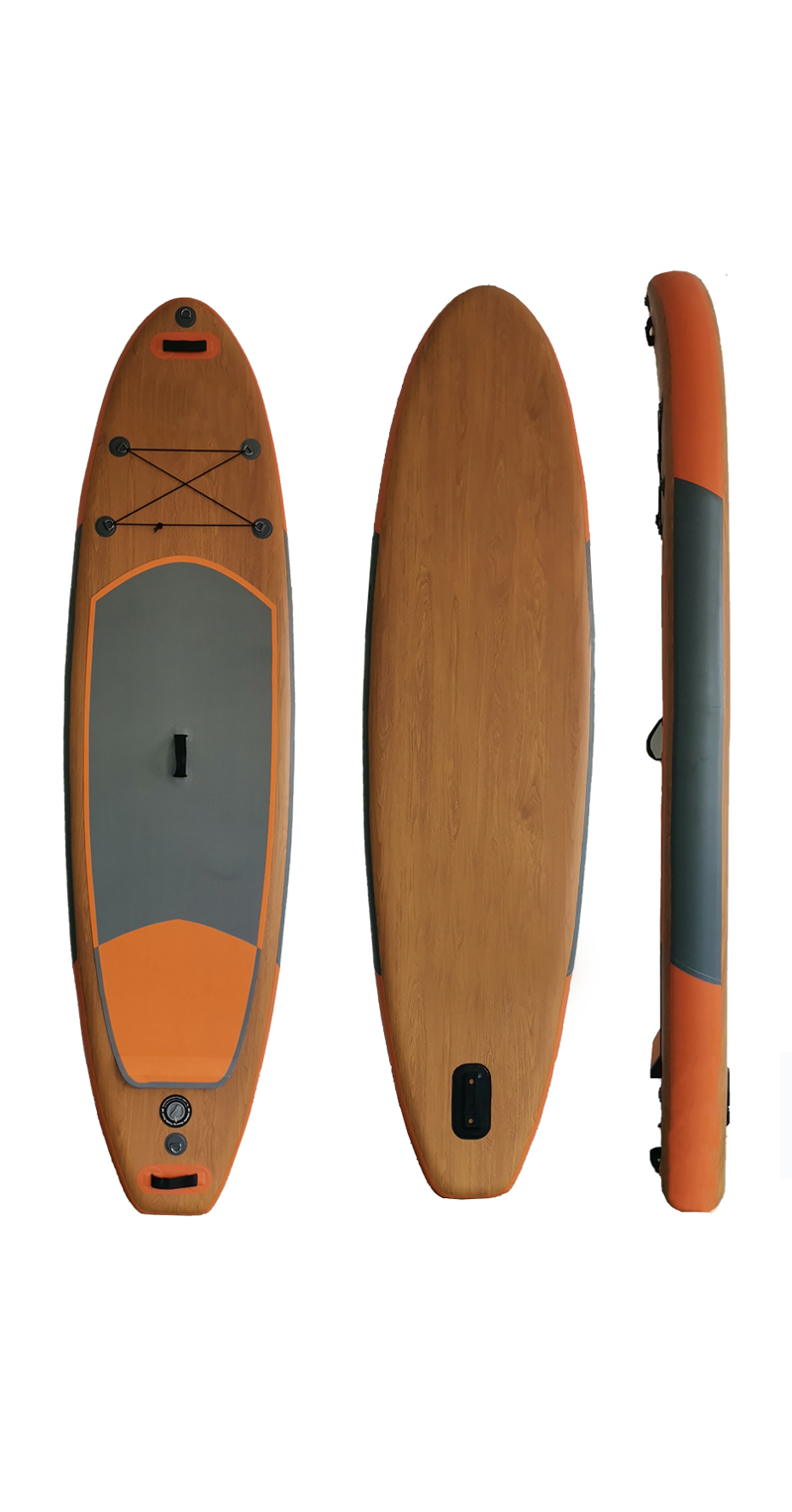Introduction and Benefits of Stand-Up Paddleboarding
Publish Time:
2025-06-10 10:32
Source:
Stand-up paddleboarding, this water sport is popular with people of all ages and genders abroad, and is usually conducted in freshwater and shallow water areas. As the name suggests, stand-up paddleboarding is playing surfboard while standing! Stand-up paddleboarding, also known as paddleboarding (100 SUP), originated in Hawaii, USA, and has gradually become popular worldwide in recent years. Initially, in order to manage numerous students, the surfboard was called a stand-up paddleboard, because standing upright allowed them to better observe the surrounding environment and approaching waves from a distance. This water sport is popular with people of all ages and genders abroad, and is usually conducted in freshwater and shallow water areas.
In recent years, the number of domestic paddle brands has gradually increased, especially in many coastal areas such as Weihai and Qingdao in Shandong Province and Jiangsu Province. For example, most are domestically produced DAMA paddles. Few people in China engage in this sport. DAMA paddles are purely handmade and are not very stable, which may be difficult for beginners to use.

A paddle, a board, between heaven and earth, how natural and unrestrained, perhaps this is its charm. Stand-up paddleboarding has become one of the more popular water sports. If you think it has a high threshold, you are wrong.
In fact, stand-up paddleboarding is not as high-end as you might imagine; people of all ages and genders can easily get started. You can even bring your cats and dogs surfing! You can do yoga on the paddleboard, you can fish on the paddleboard, or you can use it as a tool to relieve work pressure, do aerobic exercise, and relax.
Since 2013, stand-up paddleboarding has been rated as one of the fastest-growing and most popular outdoor activities. Wherever you go, you will often encounter surfers. This is a fun and relaxing sport with many health benefits. Enhanced balance: The water surface is not flat; for example, standing on a board requires a lot of core stability and leg strength to maintain balance.
Full body workout: Because you need to maintain balance on an upright board, your leg muscles will work to stabilize your center of gravity. Your arms, back, and shoulders work together to counteract the resistance of the paddle in the water. Your core, back, and abdominal muscles constantly work to maintain balance. If you exert too much force or are just starting to exercise, you will feel muscle soreness, which indicates that you have exercised.
Low impact: Stand-up paddleboarding is classified as a low-impact sport. Therefore, you are unlikely to injure the tendons and ligaments of any joints. Stress reduction: Exercise can significantly reduce stress, and water can naturally soothe the mind and body. When your paddling rhythm matches your breathing, that wonderful feeling of "walking on water" will instantly relieve stress! Enhanced overall strength: After a day of exercising on a stand-up paddleboard, your body will naturally feel some pain. This means you are building overall strength.
Aerobic exercise: If you have enough time to paddle on the water, you can also do aerobic exercise. Compete with friends while paddling for better results. Close to nature: Maintaining calmness on the water and being close to nature always has a positive impact on your mental health and attitude.
Other News
The Ultimate Guide to Lightweight Inflatable Kayak Boats: Freedom on Water
Lightweight inflatable kayak boats have gained immense popularity among water sports enthusiasts and casual adventurers alike. Their innovative design combines the comfort of traditional kayaks with the convenience of portability, making them ideal for a variety of water activities, from serene lake paddling to challenging river excursions. This guide will delve into the numerous advantages that t
Get Ready for Waves: Inflatable Surfboards for Teen Enthusiasts
Get Ready for Waves: Inflatable Surfboards for Teen Enthusiasts Table of Contents Understanding Inflatable Surfboards Why Choose Inflatable Surfboards for Teens? Key Features to Look for in Inflatable Surfboards Top Inflatable Surfboards for Teen Enthusiasts Safety Tips for Surfing with Inflatable Boards Caring for Your Inflatable Surfboard Surfing Techniques for Begin
Choosing a Durable PVC Kayak for Beginners: Essential Insights
When starting your journey into kayaking, selecting the right watercraft can significantly enhance your experience. A durable PVC kayak stands out as an excellent choice for beginners, offering both resilience and ease of use. PVC, or polyvinyl chloride, is a popular material in the production of inflatable kayaks due to its strength and flexibility. Here are several reasons why a durable PVC kaya
Inflatable Surfboards for Adults: The Ultimate Guide to Enjoying Water Sports
Inflatable Surfboards for Adults: The Ultimate Guide to Enjoying Water Sports Table of Contents 1. Introduction to Inflatable Surfboards 2. Benefits of Using Inflatable Surfboards 3. How to Choose the Right Inflatable Surfboard 4. Key Features of Inflatable Surfboards 5. How to Properly Inflate and Deflate Your Surfboard 6. Essential Safety Tips for Surfing 7. Maintena
The Advantages of Soft Top Inflatable Surfboards: A Guide for Water Sports Enthusiasts
Soft top inflatable surfboards have rapidly gained popularity among water sports enthusiasts, offering a unique combination of convenience, safety, and performance. Whether you're a beginner looking to catch your first wave or an experienced surfer seeking a portable solution, understanding the advantages of soft top inflatable surfboards can help you make informed decisions. ### Portability and C
The Ultimate Guide to Choosing the Best Lightweight Inflatable Kayak Boat
The Ultimate Guide to Choosing the Best Lightweight Inflatable Kayak Boat Table of Contents 1. Understanding Lightweight Inflatable Kayaks 2. Why Choose a Lightweight Inflatable Kayak? 3. Key Features to Consider When Buying 3.1 Material Quality 3.2 Weight Capacity 3.3 Stability and Performance 3.4 Comfort Features 3.5 Portability and Storage 4. Top Lightweight Inflatable Kayaks on the Market 4.1


